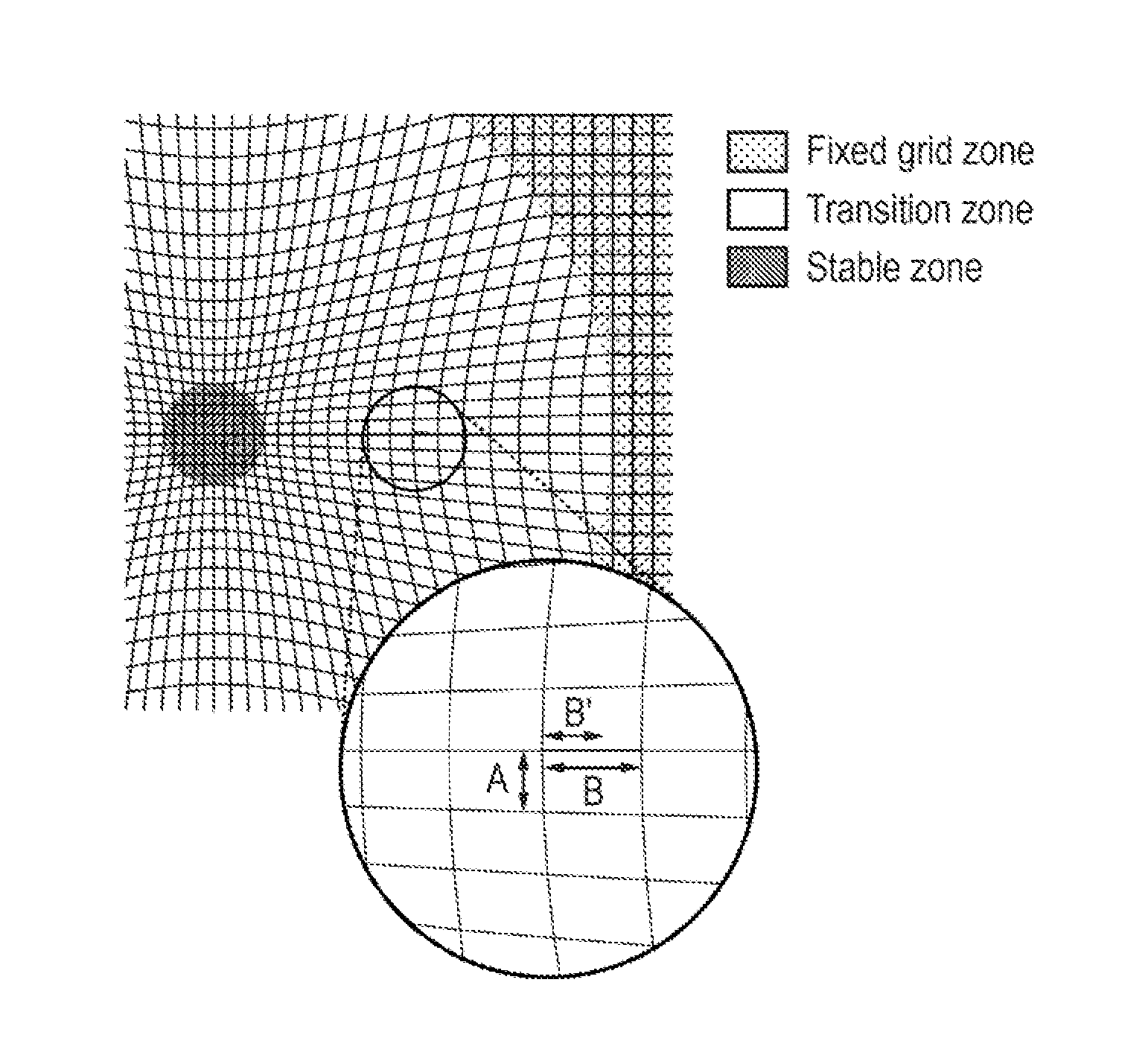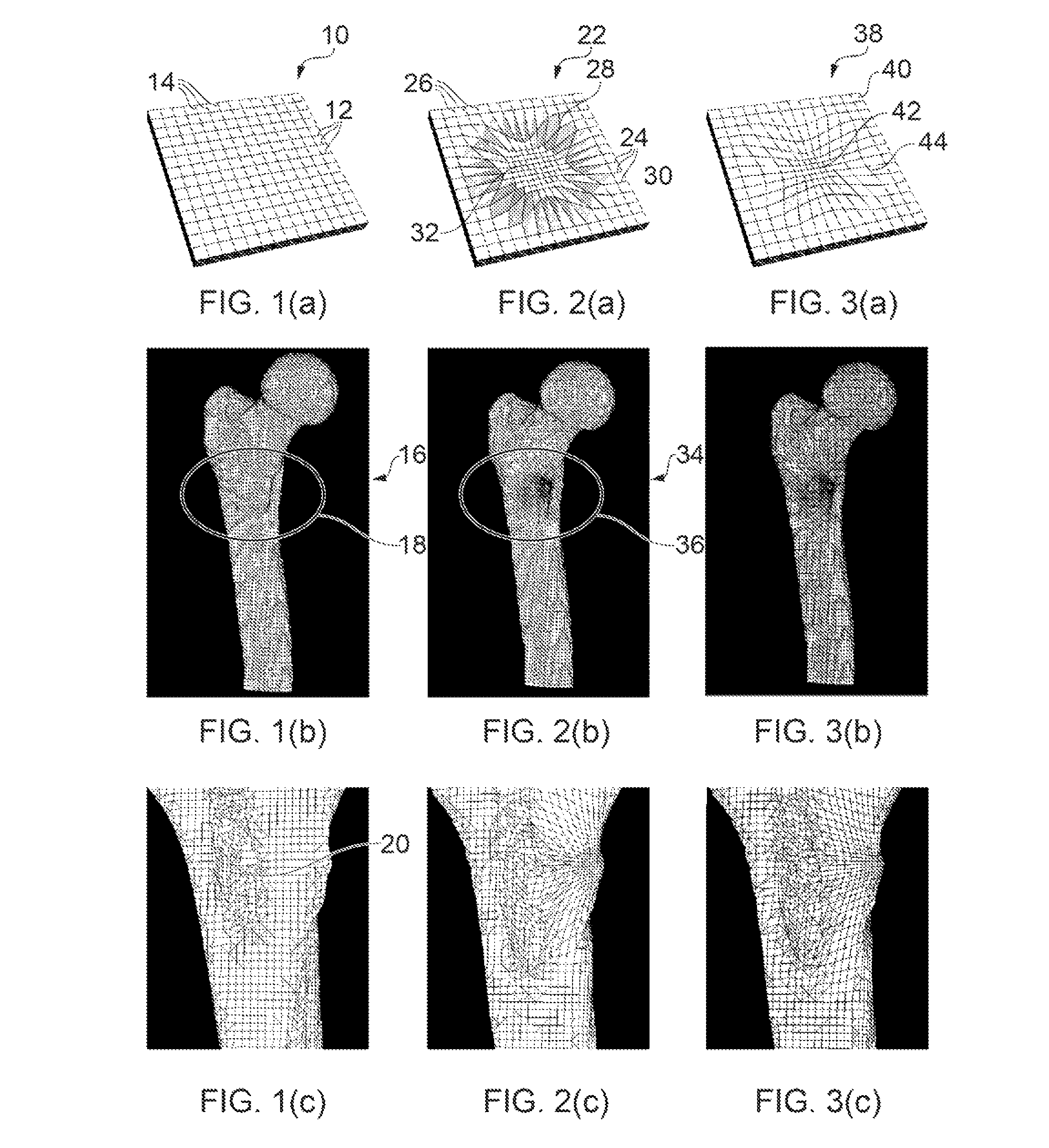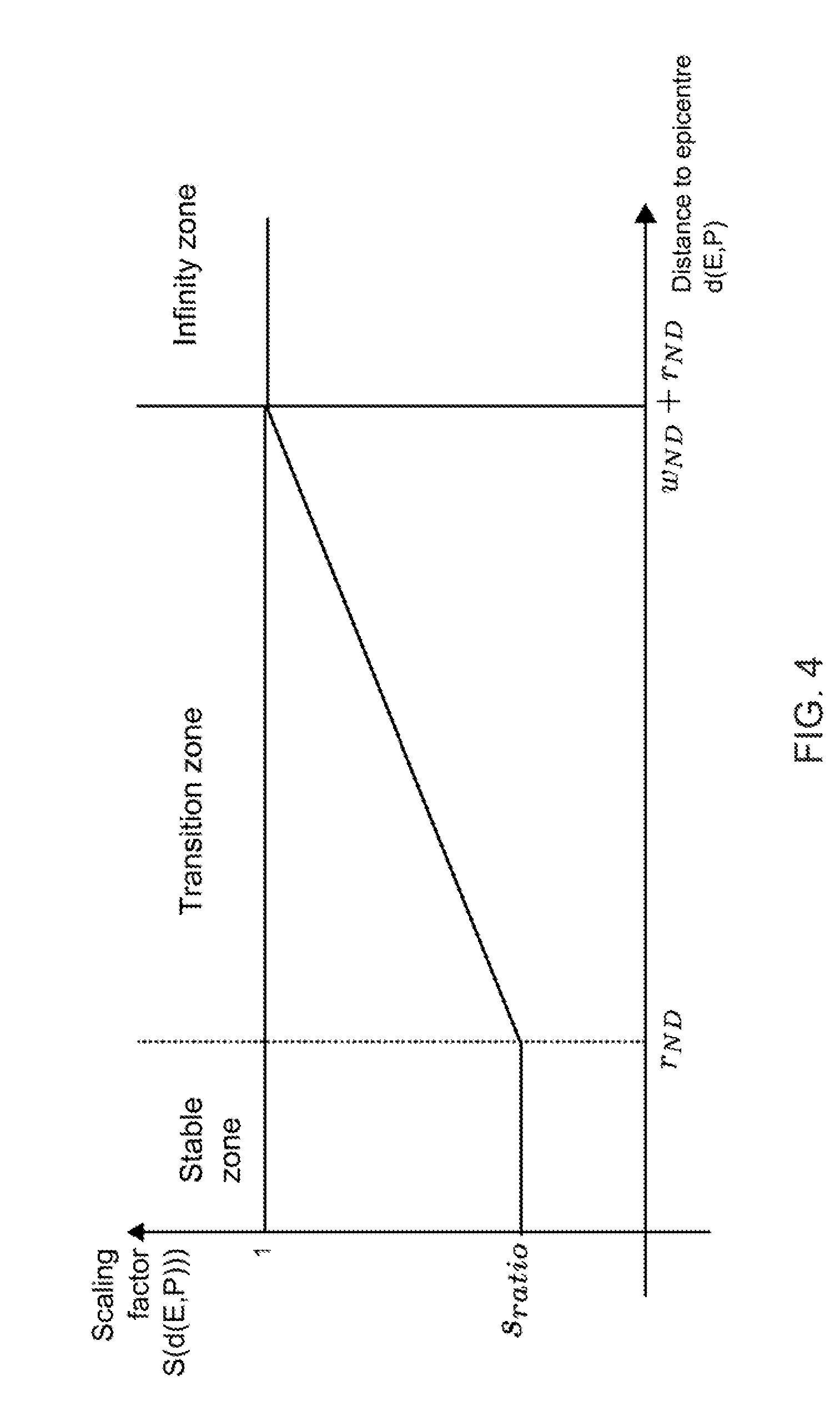Image processing method
a processing method and image technology, applied in the field of meshed model generation, can solve the problems of computational intractable problems, model generated in this way may not be efficient to process, etc., and achieve the effects of accurate high stress gradients at the point of impact, avoiding overlapping, and preserving suitability
- Summary
- Abstract
- Description
- Claims
- Application Information
AI Technical Summary
Benefits of technology
Problems solved by technology
Method used
Image
Examples
Embodiment Construction
[0057]The present invention is concerned with generating meshed models from image data to permit finite element (or finite volume) analysis to be performed e.g. by using the cells of the mesh as the primitive units in the analysis. The examples below are based on 3D image data and 3D meshes, but the same principles are applicable to 2D image data and 2D meshes.
[0058]The examples illustrated in FIGS. 1-3 are based on a 3D image of the top half of a human femur, taken e.g. using a computerised tomography (CT) scanner or the like. However, the invention may be applied to any type of image data which involves sampling the space in which the object to be imaged resides.
[0059]The method of generating a mesh according to the invention involves sampling the image data at a plurality of sampling points. FIG. 1(a) shows one layer (i.e. a cross-section) of a uniform 3D sampling point distribution 10. FIG. 1(a) shows a grid of regularly spaced horizontal lines 12 and vertical lines 14 which int...
PUM
 Login to View More
Login to View More Abstract
Description
Claims
Application Information
 Login to View More
Login to View More - R&D
- Intellectual Property
- Life Sciences
- Materials
- Tech Scout
- Unparalleled Data Quality
- Higher Quality Content
- 60% Fewer Hallucinations
Browse by: Latest US Patents, China's latest patents, Technical Efficacy Thesaurus, Application Domain, Technology Topic, Popular Technical Reports.
© 2025 PatSnap. All rights reserved.Legal|Privacy policy|Modern Slavery Act Transparency Statement|Sitemap|About US| Contact US: help@patsnap.com



